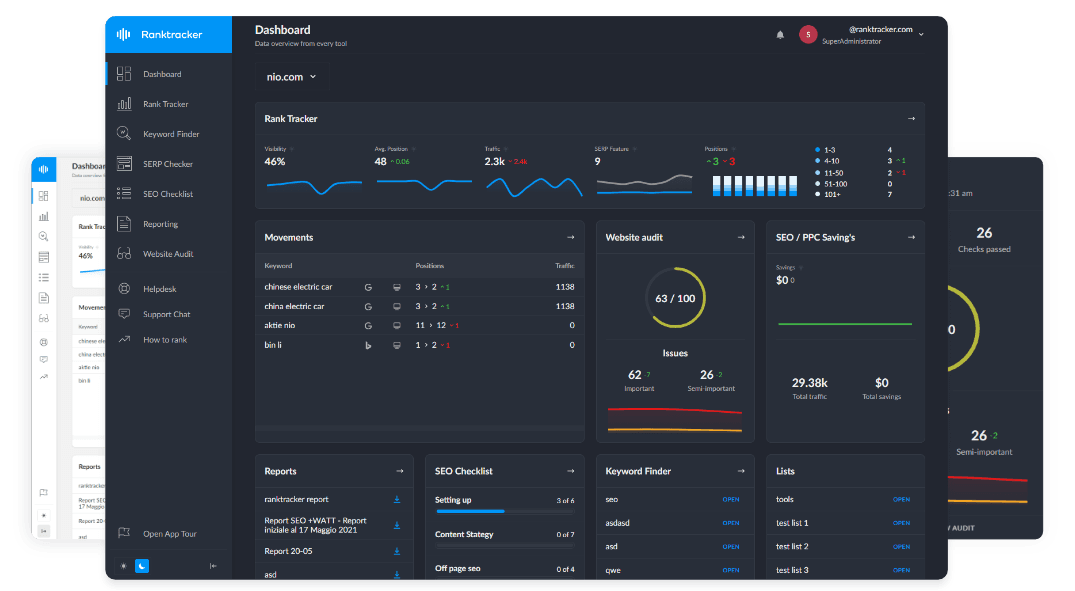Intro
If you’ve ever tried to design cloud architecture in AWS from scratch, you probably already know: it’s equal parts freedom and chaos. There are a thousand ways to build something, and just as many ways to screw it up.
A short look at AWS documentation may depart you thinking, “Cool, we'll simply observe first-rate practices.” But in real-international environments, first-rate practices not often live on first touch with real commercial enterprise needs, price range limits, or human error. That`s why running with professionals like perfsys early on can prevent from gambling whack-a-mole with protection holes and scaling complications later.
The goal isn’t just to get something that runs. It’s to build a system that doesn’t fall over when traffic spikes or a region blinks out — and doesn’t leave the front door wide open to the internet.
Let’s Start With the Obvious: AWS Is a Beast
You can build practically anything with AWS. From two-person startups to sprawling enterprise platforms, the building blocks are all there — EC2, Lambda, RDS, S3, IAM, VPCs, the list goes on. The catch? The more options you have, the easier it is to create a tangled mess.
It’s not that AWS is badly designed. It’s just that you have to design it properly. Otherwise, you end up with what some teams call “cloud spaghetti”: interdependent services, hardcoded secrets, no tagging, no logging, and absolutely no idea what’s costing how much.
Reliability and Security Aren’t Nice-to-Haves
It’s tempting to treat security and reliability as future-you’s problem. “We’ll secure it after we go live.” “We’ll add monitoring next sprint.” But ask anyone who’s dealt with a data breach or a multi-hour outage — skipping those steps is how you end up pulling all-nighters.
What Reliability Really Means
This isn't about uptime guarantees on a slide deck. It’s about engineering for failure. Services go down. Disks fail. APIs time out. What matters is whether your system keeps functioning when things break.
Do you have redundancy across Availability Zones? Can your system tolerate a failed database node without losing data or throwing errors? Are you running critical workloads in a single region because “that’s what was easiest to deploy”? These are the questions that separate working systems from resilient ones.
And Security? It’s Not Just IAM
Yes, Identity and Access Management (IAM) is the first wall. But security spans way beyond that. Publicly accessible S3 buckets. Over-permissioned roles. Secrets hardcoded into Lambda functions. Logging turned off “to save cost.” All of these are time bombs.
Using the aws well architected framework can help identify these issues before they explode. It breaks architecture down into five key areas — security, reliability, operational excellence, performance efficiency, and cost optimization — and forces teams to evaluate each, honestly. It’s not a silver bullet, but it does push you to ask hard questions.
The Building Blocks That Actually Matter
Alright, let’s get into the meat of it. Here’s what matters when you’re building secure, reliable architecture on AWS — and where teams most often get it wrong.
Use IAM Roles the Right Way (Yes, Really)
IAM roles are powerful. Too powerful, sometimes. It’s way too easy to slap on “AdministratorAccess” because something’s not working, promise to fix it later… and then never fix it.
The All-in-One Platform for Effective SEO
Behind every successful business is a strong SEO campaign. But with countless optimization tools and techniques out there to choose from, it can be hard to know where to start. Well, fear no more, cause I've got just the thing to help. Presenting the Ranktracker all-in-one platform for effective SEO
We have finally opened registration to Ranktracker absolutely free!
Create a free accountOr Sign in using your credentials
You need to lock this down early. Principle of least privilege isn’t just a best practice — it’s the only sane way to operate. That means:
-
Scoped roles per service
-
Avoiding wildcards in permissions
-
Short-lived credentials
-
Mandatory MFA for human users
Sound like a pain? It is. But so is explaining to your boss why someone exfiltrated customer data from a misconfigured Lambda.
Separate Your Network Like You Mean It
This is another area where shortcuts backfire. You don’t need a super complex network setup, but some basics go a long way:
-
Public subnets only for things that must face the internet (e.g., ALBs)
-
Private subnets for everything else
-
NAT gateways for controlled outbound access
-
VPC endpoints for AWS service traffic without hitting the public internet
A flat VPC with everything on the same subnet might feel easy. Until something breaks and takes everything with it.
Logging and Monitoring: You Can’t Fix What You Can’t See
This shouldn’t even be up for debate anymore. Logging isn’t optional. If you’re not capturing CloudTrail, CloudWatch metrics, and VPC flow logs, you’re flying blind.
But here’s the catch — logging alone isn’t enough. You need to actually look at the logs. Create alerts for the stuff that matters. Filter out the noise. And make sure logs are centralized across accounts and regions. Fragmented visibility is no visibility.
Encrypt Everything (No Exceptions)
Use KMS for data at rest. Use TLS for data in transit. Rotate keys. Monitor access. This is one of those areas where being lazy now gets very expensive later.
And don’t forget about things like RDS encryption, EBS volume settings, and API Gateway TLS enforcement. These little details stack up.
Infrastructure as Code or Bust
Still deploying by clicking around the AWS console? That’s fine for dev, dangerous for prod.
Use Terraform, CloudFormation, or CDK. Whatever your team prefers — just pick one and stick with it. Version control your templates. Use CI/CD to deploy. Automate rollbacks. Manual deployments are an open invitation for mistakes.
Also: tag everything. Resources without tags are like cables without labels — nobody knows what they’re for, and everyone’s afraid to touch them.
Scaling Without Sinking
Let’s be clear: AWS loves when you over-provision. You get “performance,” they get your money. Scaling efficiently is about knowing your patterns — and planning for them.
Use auto-scaling groups, spot instances (carefully), and caching layers. But more importantly: test under load. The last thing you want is discovering your RDS instance melts under real traffic two days after launch.
The All-in-One Platform for Effective SEO
Behind every successful business is a strong SEO campaign. But with countless optimization tools and techniques out there to choose from, it can be hard to know where to start. Well, fear no more, cause I've got just the thing to help. Presenting the Ranktracker all-in-one platform for effective SEO
We have finally opened registration to Ranktracker absolutely free!
Create a free accountOr Sign in using your credentials
Also, reserve capacity when it makes sense. It saves money and prevents surprise provisioning failures.
Disaster Recovery Plans Are Not Optional
What happens if a region goes down? What if your primary database gets corrupted? If the answer is “uh… we’d be in trouble,” then it’s time to rework your DR strategy.
The All-in-One Platform for Effective SEO
Behind every successful business is a strong SEO campaign. But with countless optimization tools and techniques out there to choose from, it can be hard to know where to start. Well, fear no more, cause I've got just the thing to help. Presenting the Ranktracker all-in-one platform for effective SEO
We have finally opened registration to Ranktracker absolutely free!
Create a free accountOr Sign in using your credentials
This doesn’t mean building an identical copy of your infrastructure in another region. It means knowing:
-
What you’d restore
-
How long it would take
-
What data would be lost (if any)
-
Who’s responsible for what during a failover
And yes — you should test your recovery plan. Otherwise, it’s just fiction.
Common Anti-Patterns to Avoid
Let’s rapid-fire some no-no’s that show up way too often:
-
One big account for everything: use AWS Organizations. Separate prod, dev, staging, etc.
-
Leaving default VPCs and security groups untouched: lock them down.
-
Over-relying on t2.micro instances “for testing” — they’ll end up in prod eventually.
-
Not budgeting for CloudWatch costs: yes, logging costs money. Not logging costs more.
-
Giving access to “just fix it quickly”: fix your process instead.
Final Words? Stay Flexible, Stay Sane
Cloud architecture isn’t about finding the perfect setup. It’s about building something that’s flexible, robust, and understandable by more than just the person who wrote it.
You’re never really “done” — and that’s okay. What matters is being intentional. Asking hard questions early. Auditing frequently. Automating where it counts. And knowing when to call in help.
Because let’s be honest — AWS is powerful, but it’s also easy to get lost in. Working with seasoned engineers who live and breathe cloud architecture can make the difference between “it works, mostly” and “we sleep at night.”
And that’s worth building for.

